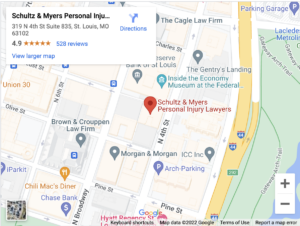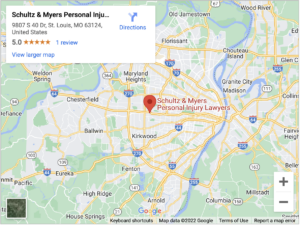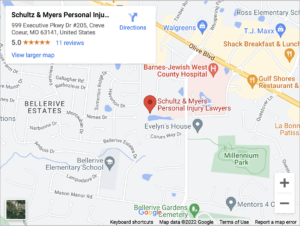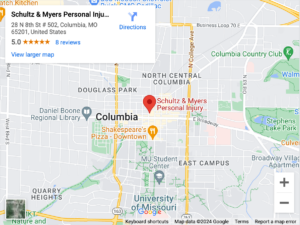
The eye is a complex and sensitive organ. Damage to any of its structures could impair your vision or blind you. You can even experience visual impairments when you damage the bones, muscles, or nerves surrounding the eye.
If you suffer an eye injury, you may need to relearn almost every task you perform, from reading to driving. Fortunately, you can pursue compensation when you suffer an eye injury due to someone else’s intentional or negligent actions.
The Anatomy of Your Eyes

Your eyes are specialized nerves that gather light and convert it to nerve signals. The brain decodes the nerve signals to form visual images.
Your eyes sit inside the orbits of your skull. These sockets support the eyes and maintain their spacing and alignment. The position of your eyes gives you two slightly different but overlapping pictures. Your brain uses these pictures to construct a three-dimensional image of your surroundings.
Muscles connect your eyeball, also called the globe, to the skull. These muscles move your globes. Nerves running to these muscles control how your eyes pivot within the orbits.
The cornea covers the front of the globe. This clear, tough membrane protects the globe from debris, foreign objects, and harmful radiation. It also begins the process of focusing light passing into the eye.
The iris and pupil sit behind the cornea. The iris is a muscle that opens and closes the pupil to regulate the amount of light entering the globe. Your pupils contract in bright light to protect your retina. They dilate in darkness so your eye can gather additional light.
The pupil leads to the lens. Muscles in the globe change the shape of the lens to focus light on the retina at the back of the eye. The retina has over 100 million light-receptive cells. These cells detect both the intensity and wavelength of the light so you can perceive the brightness and color of the light striking the retina.
The retina connects to the optic nerve. The retina generates nerve signals and transmits them to the brain along the optic nerve.
How Do Eye Injuries Happen?
Eye injuries can result from a few different types of trauma, including:
Blunt Force Trauma
An impact on your face can damage your eye even if you do not suffer an open wound. This blunt-force trauma can break bones and bruise tissues. With enough force, blunt force trauma can damage or even rupture the globe.
Blunt force trauma can happen when your head hits something. Thus, you could experience blunt force trauma when your eye and face hit the floor in a trip and fall or slip and fall accident.
You can also suffer blunt force injuries when something strikes your face. In a workplace accident, a blunt-force injury may occur if a defective shelf collapses and a box falls on your face and hits your eye.
Penetrating Trauma
A foreign object can pierce your eye. This penetrating trauma damages the eye structures. It can also lead to bleeding and infection.
Penetrating eye injuries can happen in the workplace when an object gets thrown into the eye. This is the reason many employers require workers to wear eye protection.
Debris
A common eye injury happens when debris enters your eye. The debris does not penetrate into your globe. Instead, it sits on the surface, damaging the cornea, globe, muscles, nerves, and blood vessels surrounding the eye.
For example, in a car accident, you could get broken glass in your eye. The broken glass might not penetrate into the globe, but it could abrade the cornea and even get tangled in the muscles that move the globe.
What Are Some Examples of Eye Injuries?
You can suffer many types of eye injuries depending on the structures that get damaged in your accident. Some examples of eye injuries include the following:
Corneal Abrasion
Debris in your eye can scratch the cornea.
Symptoms of an abrasion include:
- Eye pain
- Tears
- Bloodshot eyes
- Blurred vision
Corneal abrasions usually heal without any complications in a week or two. Your doctor might prescribe antibiotic eye drops to reduce the risk of infection.
Fractured Orbital
You have seven orbital bones that form the floor, roof, back, and side walls of the eye socket. Four of the orbital bones extend out of the socket onto your face to surround the eye. A blunt-force injury to the face can fracture the orbital bones that surround and support the globe. The fracture can disfigure you with scars, crossed eyes, and asymmetrical features.
The bone fragments from a fractured orbital could also tear into the globe as well as the muscles, nerves, and blood vessels surrounding it. Even if the bone fragments do not damage the globe or other tissues, the fracture can cause the globe to dislocate. The misalignment in your eyes due to the dislocation can cause double vision or other visual impairments.
Ruptured Globe
Penetrating or blunt-force trauma can cause the globe to burst. A fluid fills the globe to maintain its shape and hold the retina to the back of the eye. When the globe ruptures, the fluid can leak out.
Doctors can repair the rupture. But a ruptured globe will almost always result in some vision loss. In many cases, the victim will suffer total vision loss.
Detached Retina
The retina can detach from the back of the eye due to trauma. Symptoms of a detached retina include a shadow across the visual field and a loss of peripheral vision.
When it detaches, the retina loses its blood supply and begins to die. Without emergency surgery to reattach it, you will suffer permanent vision loss in that eye. Reattachment surgery typically involves pushing the retina back into place and creating scar tissue with a freezing probe or lasers to hold it.
Can You Get Compensation For an Eye Injury?
You can pursue compensation for eye injuries that resulted from someone else’s negligent or intentional actions. You can prove liability by showing that someone intended the actions that injured your eye or failed to exercise reasonable care, and as a result, they injured your eye.
The compensation you can seek for your injuries includes your medical treatment and therapy costs. You can also recover compensation for your income losses. Both of these will be significant when you suffer an eye injury.
You can also pursue compensation for non-economic losses. These losses represent the diminishment in your quality of life due to your eye injury. You can seek compensation for your disabilities, pain, and mental anguish.
An eye injury can leave you with visual impairments that disable you and erode your quality of life. Contact Schultz & Myers Personal Injury Lawyers at (314) 444 4444 for a free consultation to discuss your eye injury and the compensation you may seek under Missouri law.





